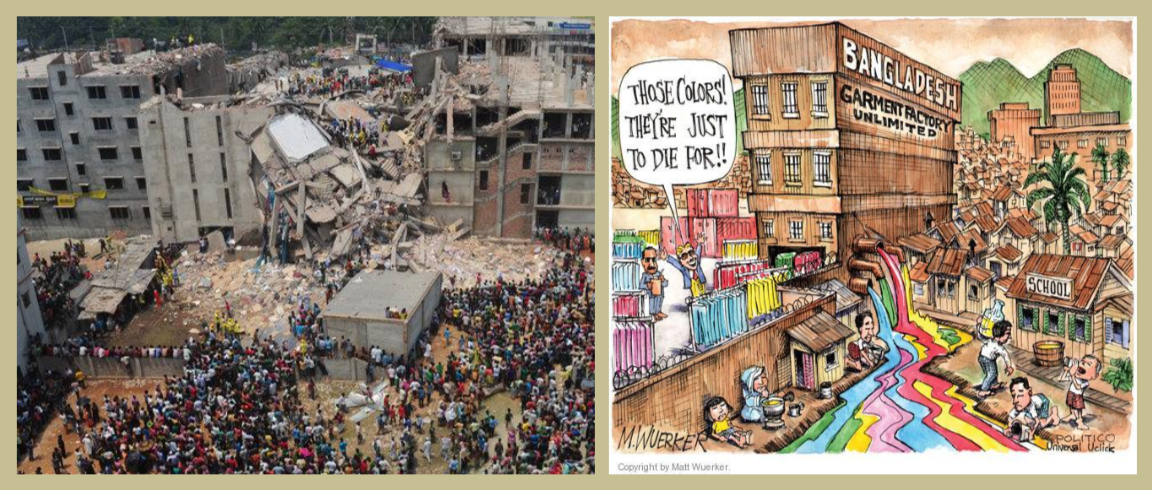Image

Source
Begey, Melissa. 2018. “The Toxic Garment Factory: Environmental and Social Impacts of The Rana Plaza building collapse in Dhaka, Bangladesh.” In Toxic Fashion, created by Melissa Begey. In Visualizing Toxic Subjects Digital Exhibit, curated by James Adams and Kim Fortun. The Center for Ethnography. November 10.
Yardley, Jim. 2013. “Report on Deadly Factory Collapse in Bangladesh Finds Widespread Blame.” New York Times, November 10, 2018. https://www.nytimes.com/2013/05/23/world/asia/report-on-bangladesh-building-collapse-finds-widespread-blame.html.
Wuerke, Matt. 2013. “Matt Wuerker's Editorial Cartoons: Published 2013-09-17 (Image 101820).” Cartoonist Group, November 10, 2018. http://www.cartoonistgroup.com/store/add.php?iid=101820.
Language
English
English

Substantive Caption: I created this visual collage of The Rana Plaza building collapse in Dhaka, Bangladesh because it speaks to the social, ethical, political, and environmental impacts of (fast) fashion. On April 24, 2013, an eight storey commercial building in the Dhaka District of Bangladesh collapsed killing 1134 people. It stands as the deadliest garment-factory disaster in history. The building housed a number of separate garment factories employing around 5,000 people and manufacturing apparel for dozens of US and European brands. The image on the left is aerial footage of the Rana Plaza Building on the day of its collapse. Taken from a New York Times Article, I chose this image because it speaks to the toxic nature of corporate and governmental corruption and greed, as well as western consumers complicity in turning a blind eye to toxic capitalism in our desire for cheap clothing. This image is juxtaposed with the cartoon on the right, which speaks to the environmental impacts of textile dyeing in garment manufacturing process in Bangladesh. When viewed together, the Bangladesh garment factory operates as a kaleidoscope for toxic fashion: is it not only a single incident of structural failure that is toxic, but the ongoing social, ethical, political, and environmental conditions of outsourced garment production at large.
Design Statement: I’m interested in the ways in which photographic journalism is increasingly used as a seemingly transparent window into global production processes. How do images, such as the Rana Plaza Building collapse, come to signify toxic fashion, and the corporate greed and social injustices upon which such toxicity rests? On the other hand, I am equally interested in the ways in which images become the foundation for parodic forms of critical engagement. What can image appropriation, such as a the cartoon on the left, “do” that a framed photograph cannot?